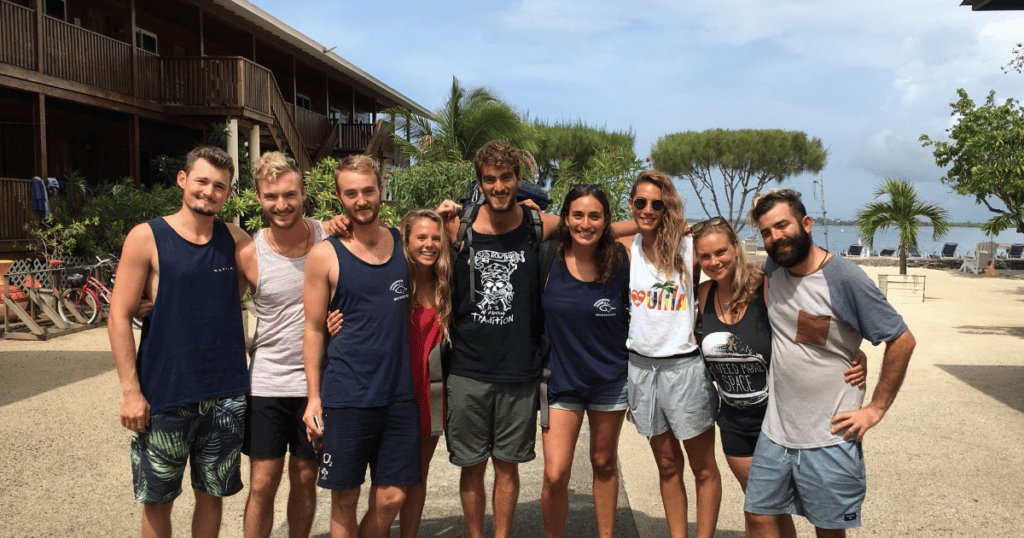Table of Contents

Many of my skills don’t quite fit on a resume.
Sure, a Bachelor of Science in Psychology is credible. Proficiency in Figma, Miro, and Microsoft Office is useful. But many of my abilities weren’t learned in a classroom or at a computer.
Rather, they happened while traveling, often at my wit’s end, and most of the time in uncomfortable, unpredictable, and unexpected conditions.
Admittedly, it’s hard to put into words that I’m able to make rational decisions while running on a few hours of sleep after traveling on an overnight bus.
And it’s difficult to phrase that my most memorable encounters didn’t exist verbally, but rather in the spaces between words; in the smiles, hugs, hellos, and goodbyes that happened silently because I didn’t speak the same language as someone else.
It seems that ‘works well under pressure’ and ‘good communication skills’ are a little bit easier to fit next to a bullet point.
Here’s the thing: some of the most valuable skills are learned through experiences, not from a textbook.
You learn them in busy bus terminals, ferry docks, and airports as you quickly try to decipher unfamiliar schedules, then rush to catch your next ride.
You learn them in hostel dorms, beachside restaurants, and on adventurous excursions as you get to know the group of backpackers you’re with that are all from different parts of the world.
And you learn them at sunrise on mountain tops, at sunset next to the ocean, and everywhere in between where a beautiful moment exists and you pause to appreciate the view.
My point is, traveling has taught me some of the most important lessons and life skills I think I’ll ever learn.
Now, I’m a UX writer. And so many of the things I learned traveling have helped me as I navigate the road of writing for a specific audience
Like the pictures, memories, and souvenirs I’ve gathered, these five lessons have stayed with me and continue to show up in my daily life as a UX writer.

Say yes to opportunities that scare you
Two months ago, I was urgently looking for a job. One day, a recruiter called me, said he’d just found an opportunity that seemed like a good fit, and asked if I wanted to apply.
I was skeptical and honestly questioned myself. I’d been receiving rejections and had a few interviews that just didn’t go well. I was scared to receive yet another ‘no’ and didn’t want to keep dealing with the uncertainty. Well, I said yes anyway.
Two months later and I’ve been working at a company I now love as a UX writer.
Every week, I try to say ‘yes’ to opportunities that scare me, like presenting my work in front of the entire UX department, tackling a site audit, and taking the lead on messaging requests from areas of the company I haven’t learned about yet. I know these are the opportunities that will help me grow the most.
Ultimately, traveling taught me to say yes to opportunities that present themselves by surprise, especially the ones that sound scary but evoke that little tug of curiosity and excitement.
On a kayak tour in Croatia, I was paddling around an island when the tour guide asked if anyone wanted to take a detour to go cliff jumping.
During a study abroad in New Zealand, a couple of my classmates asked if I wanted to join them on our day off to go bungee jumping.
Were these opportunities scary? Yes. Possibly a bit risky? Of course. Did I do them? Well, you already know the answer.

Ask a lot of questions
For two years, I lived on a Caribbean island that was a popular backpacker destination.
I learned to get to know people and their stories by asking a lot of questions. I fell in love with understanding different perspectives, especially when someone grew up in a completely different country than I did.
Learning about other people’s backgrounds, beliefs, and cultures taught me to question my own perspective and always keep an open mind.
That’s why I constantly ask questions as a UX writer. I understand that my perspective isn’t the only one. Sometimes, I need to defend it, and other times, I need to sit back and listen.
I’ve learned there’s usually a reason behind someone else’s decision-making. And when there isn’t, asking questions can lead others to take a step back and see the bigger picture too.
On a daily basis, I collaborate with product designers, engineers, project managers, the marketing department, and more just to accomplish a single task or piece of writing.
We all have to work together and understand each others’ perspectives to accomplish the final goal.

Make a plan, but plan to change it
Maybe you’ve heard the saying “if you fail to plan, then plan to fail.”
Well, that’s not entirely true.
Sure, it’s important to have a plan. Whether it’s for research, a project timeline, or a lo-fi wireframe, it’s good to have a guide. It’s how everyone stays on the same page and knows what’s expected.
But it’s equally as important to create a flexible plan and have the mindset that the plan can (and likely will) change.
When it comes to being a UX writer, be prepared to pivot, change directions, try something new, and get surprising results.
This happens in my daily UX writer life with deadlines getting pushed back because something wasn’t quite ready to be released. Or sometimes, an extra piece of copy needs to be created quickly because of an unexpected reaction from users. Changing plans is the only sure thing in my schedule.
I learned about making flexible plans best when I was sailing from Guatemala to Mexico on a 30-foot sailboat.
As I sat with the three other crew members, we charted our plan but left a lot up in the air. We didn’t make anything too set in stone because we knew the weather, an unreliable anchorage, or simply enjoying a place too much could easily cause us to change the plan.
I learned it’s better to roll with the changing plans rather than fight against them. Plot twists are good for the storyline anyways.

Seek authentic connections
In UX writing, one of the most important things is being able to understand your audience and speak to their needs, fears, goals, and motivations.
Not only does it increase your credibility, but it increases your audience’s trust in you.
It’s how people feel seen, heard, and understood. That’s one of the many reasons why seeking authentic connections leads to better experiences.
For starters, you don’t want to use big, complicated words that your audience won’t understand. You want to use familiar, clear language that your audience relates to.
As a UX writer, seeking authentic connections not only with my audience—but with my teammates and coworkers too—led me to a more enjoyable working environment.
When I started at my current position, I had 1:1’s with my teammates and learned about them as people rather than just coworkers.
I discovered their passions for photography, creating board games, and bird watching. We related to each other’s interests in shark teeth, dogs (who often make appearances on-screen), and Taylor Swift. I got to share my own experiences as a scuba diver. Getting to know my coworkers as people made me care more about the place I’m working at.
In my travels, I always felt that I connected more with a place when I looked for experiences that were off the beaten path, less touristy, and recommended by the people that lived there.
I didn’t want to have the experiences at the most popular and Instagram-worthy attractions.
Instead, I wanted the authentic experiences that were part of everyday life.
I wanted to eat at restaurants, visit places, and do things that locals suggested.
Seeking authentic connections led me on some incredible adventures and allowed me to form friendships with people I wouldn’t have otherwise met.

We’re all here for the same thing
There’s something about traveling that bonds you to the people you’re traveling with really quickly.
Maybe it’s because you struggle through the lows and celebrate the highs together as you experience new places and things.
Your travel friends are the ones sitting next to you on the floor of the bus terminal and also the ones swimming next to you in a crystal-blue pool at the base of a waterfall.
In a way, the same can be said for your coworkers. Sure, the environment is different. But your coworkers are often people with different backgrounds that go through highs and lows with you with a common goal in mind.
So, you could be from opposite sides of the world or working in different areas of the same company. You could be on a solo mission or working as part of a team. And you might speak different languages or have different career strengths.
But as UX writers and travelers, we’re all here for the same thing: to have and create the best experiences possible.

Of course, I learned important skills about UX writing in a formal classroom setting too. But the skills that made me change careers and chase something new in the first place?
I learned them as I stepped out of different airports in Europe and Central America, only knowing my next step was to figure out how to get to my hostel.
I learned them in Argentina exploring cities, rivers, mountains, and waterfalls with my husband’s family, discovering more about their culture, country, and how to speak Spanish.
And I learned those at the island potluck dinner where I brought my mom’s pasta salad because it reminded me of home. The same dinner where I didn’t eat that pasta salad but found a new favorite food instead after trying the shakshuka a few Israeli backpackers made.
Like my clothes, I packed these lessons up in my luggage every time I went to a new place. They’ve stayed with me and guided me through my first couple of months working as a UX writer.
Further Reading
More Than Words: 5 Soft Skills Every UX Writer Needs
UX Writing And Content Designing Backgrounds



